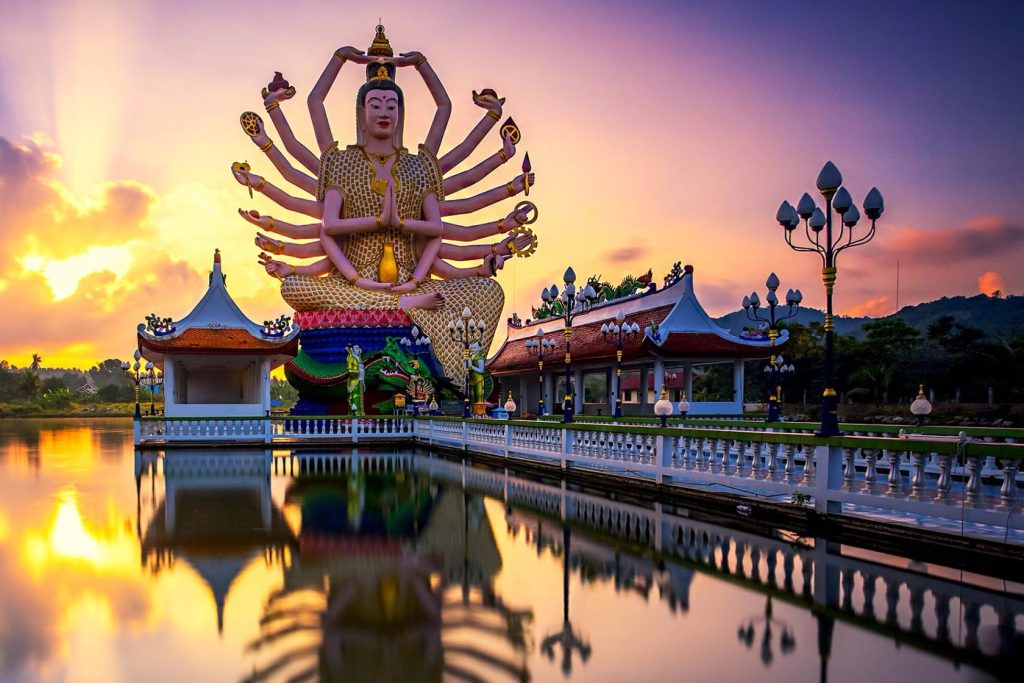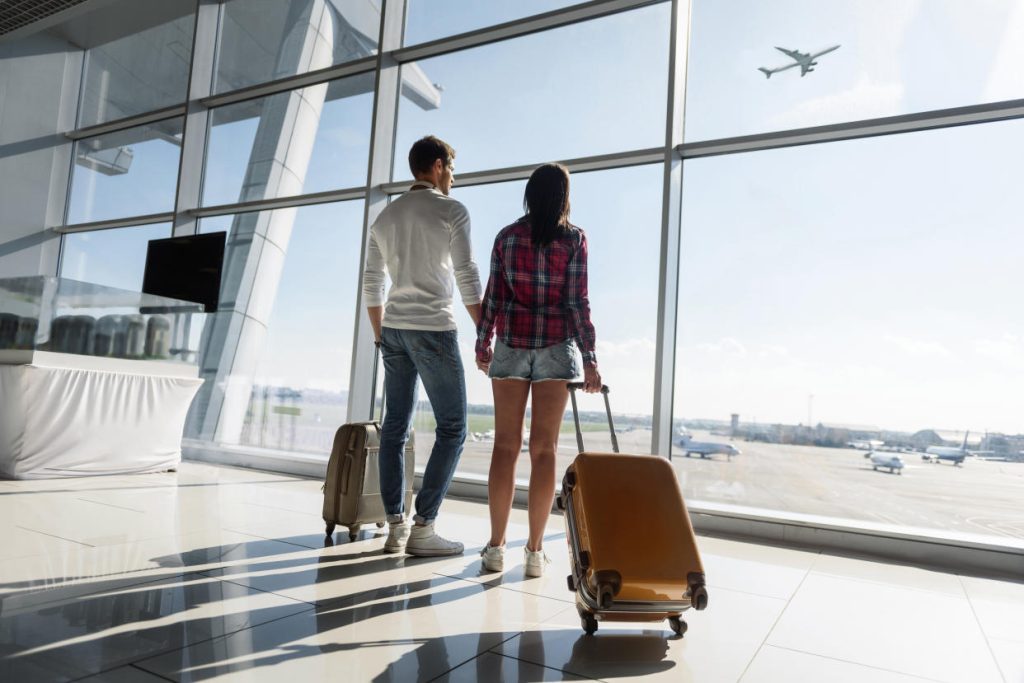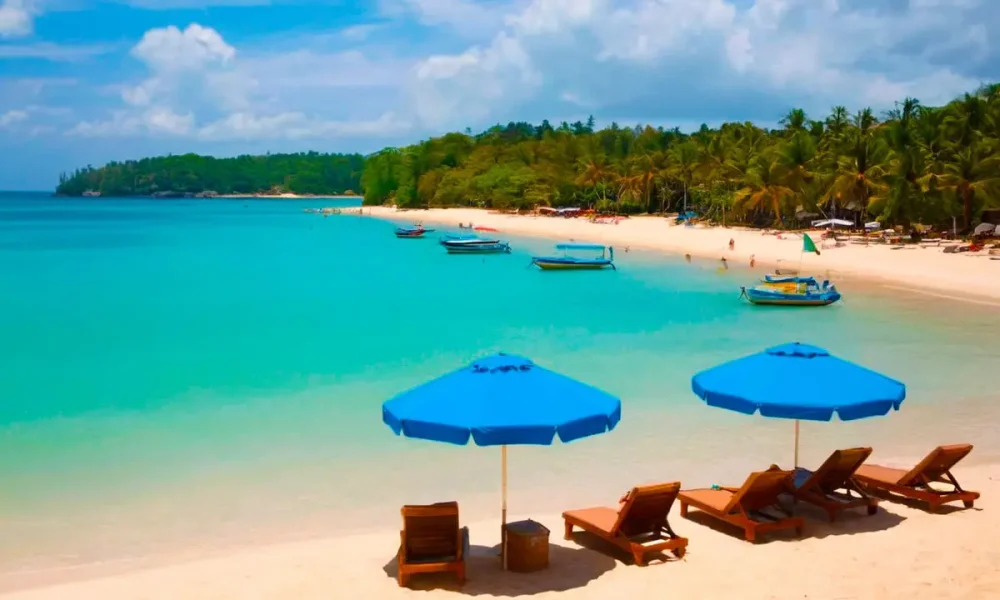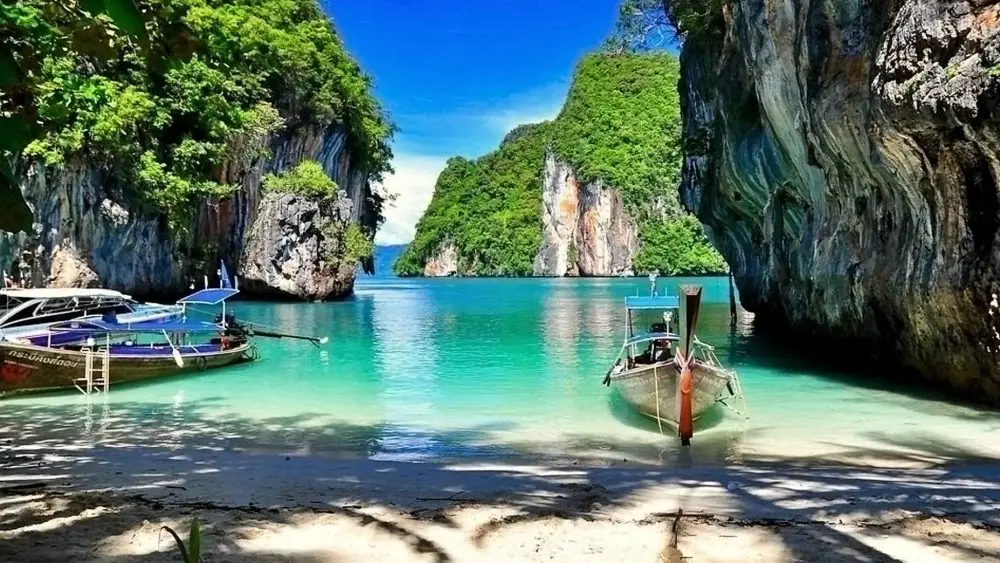Thailand has long been one of the most popular destinations for travellers from all over the world. Its tropical climate, rich cultural heritage, stunning beaches and low holiday prices attract millions of tourists. Before travelling to exotic Thailand, it is important to understand whether a tourist visa is required for entry.

Visa-free travel in Thailand: who can enter without restrictions?
Thailand actively welcomes tourists, providing visa-free entry for citizens of many countries. For most travellers, including citizens of Russia, Ukraine and EU countries, there is a special regime. This means that it is possible to come on holiday for up to 30 days without applying for a tourist visa.
It is important to remember that the visa-free regime is only valid for short-term stays. If a longer stay is planned, a permit will need to be issued depending on the purpose of the trip. For those travelling to Thailand for tourism purposes for up to 30 days, there is no need for a visa.
Minimal changes to the rules are expected in 2025, so it’s always worth checking up-to-date data on official sources.
Do I need a tourist visa for Thailand when buying a holiday?
 When travelling as part of a tourist tour, visa-free entry can be used if the period of stay does not exceed 30 days. The rule applies to most travellers, regardless of whether you buy a tour through an agency or decide to organise the itinerary on your own.
When travelling as part of a tourist tour, visa-free entry can be used if the period of stay does not exceed 30 days. The rule applies to most travellers, regardless of whether you buy a tour through an agency or decide to organise the itinerary on your own.
It is worth knowing that if you exceed the period of stay, for example, if you need to stay in the country for more than 30 days, you will need to apply for a visa. It is important to remember that tourists who decide to stay on the territory of the state for more than a month must obtain permission from the consulate or embassy before travelling.
For those who plan to travel for an extended period of time or take up employment in Thailand, there is also the option of longer visas such as entry clearance for work or study. Under the terms, you can stay in the country for 60 days or longer.
Documents to enter Thailand
To get to Thailand travellers who do not require a tourist visa just need to carry a standard package of documents:
- A passport valid for at least another 6 months from the date of entry.
- A return ticket or a ticket to a third country.
- Proof of financial solvency – the tourist must have sufficient funds to stay in Thailand. This is usually confirmed by 10,000 baht per person or 20,000 baht per family.
- Sometimes confirmation of a hotel or other accommodation booking is required.
Note: the presence of the above documents does not automatically guarantee an entry permit. It is at the discretion of the Thai Border Guard.
Tourism and holidays in Thailand: conditions for entry in 2025
Thailand has long established itself as one of the best holiday destinations due to its unique nature, warm climate, and high level of tourist services. In 2025, tourists will continue to enjoy attractive low holiday prices, as well as a variety of accommodation, excursions and water sports.
Many tourists decide to visit Thailand to spend time on the beach, and this is not surprising, because the famous resorts of Phuket, Krabi, Pattaya and the islands of Koh Samui offer excellent conditions for holidays at sea. At the same time, the country is known for its natural and cultural attractions like ancient temples, the capital Bangkok, jungle mountains, exotic flora and fauna.
List of popular beach resorts:
- Phuket is Thailand’s largest and most popular island.
- Krabi is a quiet, picturesque resort known for its beaches and mountainous landscapes.
- Pattaya is for lovers of outdoor activities, entertainment and vibrant nightlife.
- Ko Samui is an island with stunning beaches and chic resorts.
How to apply for a tourist visa to Thailand in 2025
For those planning to spend more than 30 days in Thailand, a tourist visa can be applied for at the country’s consulates or embassies abroad. To obtain authorisation, you need to submit a package of documents including:
- Completed visa application form.
- Passport valid for a minimum of 6 months.
- Two 3×4 cm colour photos.
- Confirmation of financial solvency.
- Confirmation of ticket and accommodation bookings.
- Health insurance (if required).
- If necessary, proof of the purpose of the trip (e.g. documents confirming participation in an exchange programme, courses or business events).
The process of obtaining a certificate usually takes between 3 and 10 working days depending on the type and workload of the consulate.
Moving to Thailand: Residence Permit and Permanent Residence
For those who choose to stay in Thailand for an extended period of time, there is the possibility of obtaining a residence permit (PRP). In 2025, there are several programmes available for foreign nationals to obtain a residence permit and a permanent residence permit. Some of the projects require investment in the country’s economy or the purchase of property.
Tourism, business and investment:
- For investors willing to invest in the Thai economy or property, the options of obtaining a residence permit or permanent residence are open.
- It is also possible to obtain a residence permit after 3-5 years of residence in Thailand with a valid residence permit. To do so, one must comply with all visa requirements and not violate migration laws.
Conclusion
 The answer to the question whether a tourist visa to Thailand is required depends on the plans for the trip. For a short-term stay (up to 30 days), a permit is not required if the citizen comes from a country with a visa-free regime. In case the period of stay exceeds 30 days, it is necessary to issue a visa at the consulate. All tourists planning a trip to Thailand should carefully familiarise themselves with the rules of entry and prepare the necessary documents to avoid unpleasant situations at the border.
The answer to the question whether a tourist visa to Thailand is required depends on the plans for the trip. For a short-term stay (up to 30 days), a permit is not required if the citizen comes from a country with a visa-free regime. In case the period of stay exceeds 30 days, it is necessary to issue a visa at the consulate. All tourists planning a trip to Thailand should carefully familiarise themselves with the rules of entry and prepare the necessary documents to avoid unpleasant situations at the border.
Thailand continues to attract tourists with its culture, nature and hospitality. The year 2025 will be no exception and the country will provide excellent holiday and accommodation facilities.

 en
en  ar
ar  de
de  es
es  fr
fr  nl
nl  hi
hi  el
el  it
it  pt
pt 










